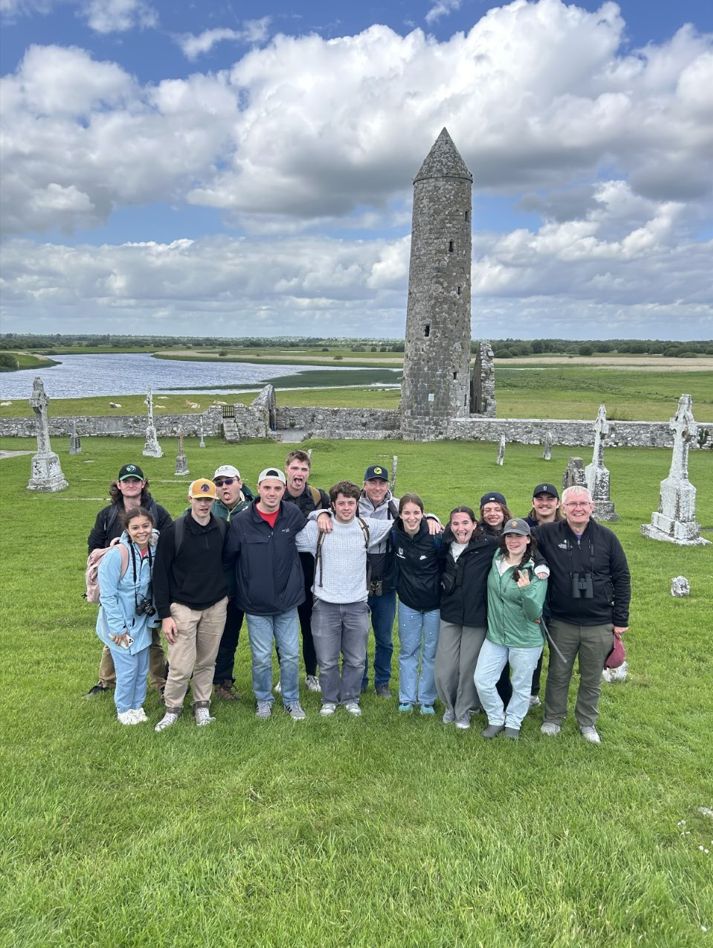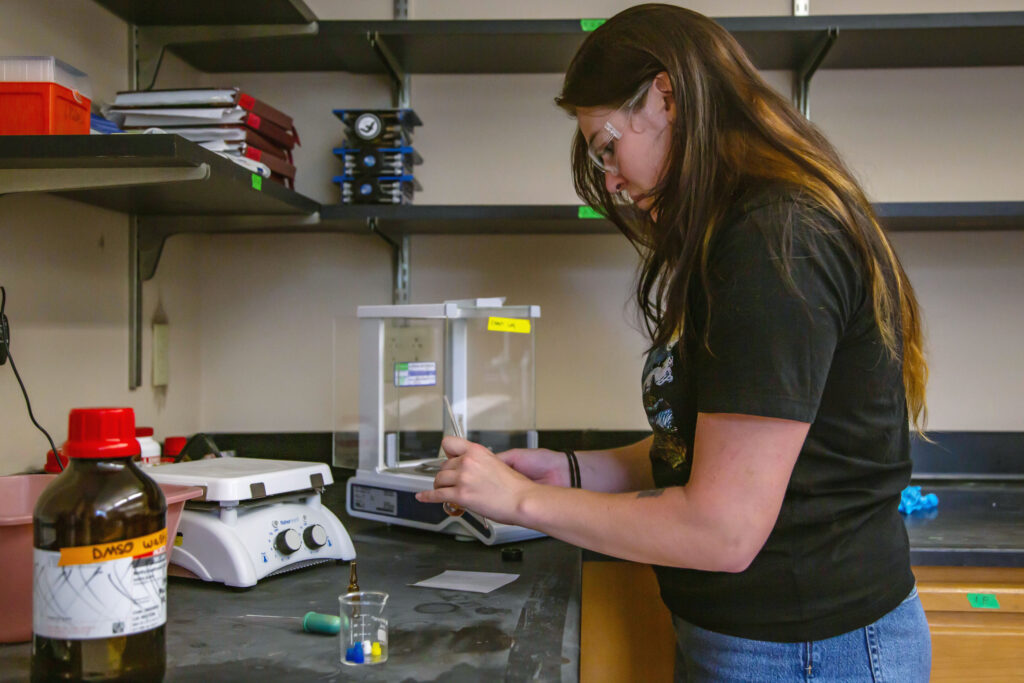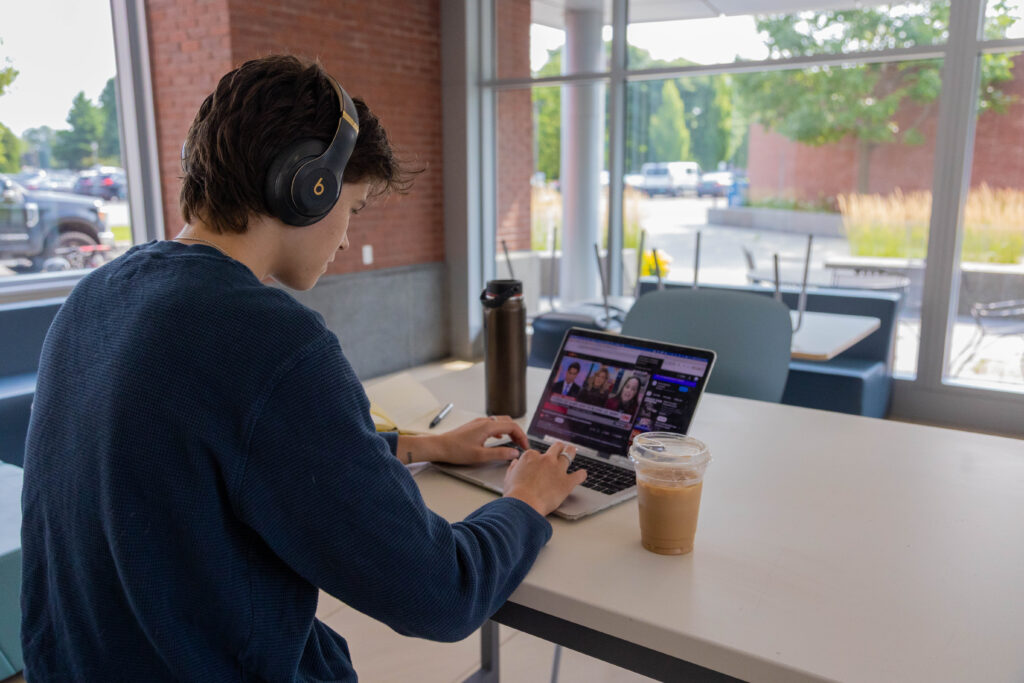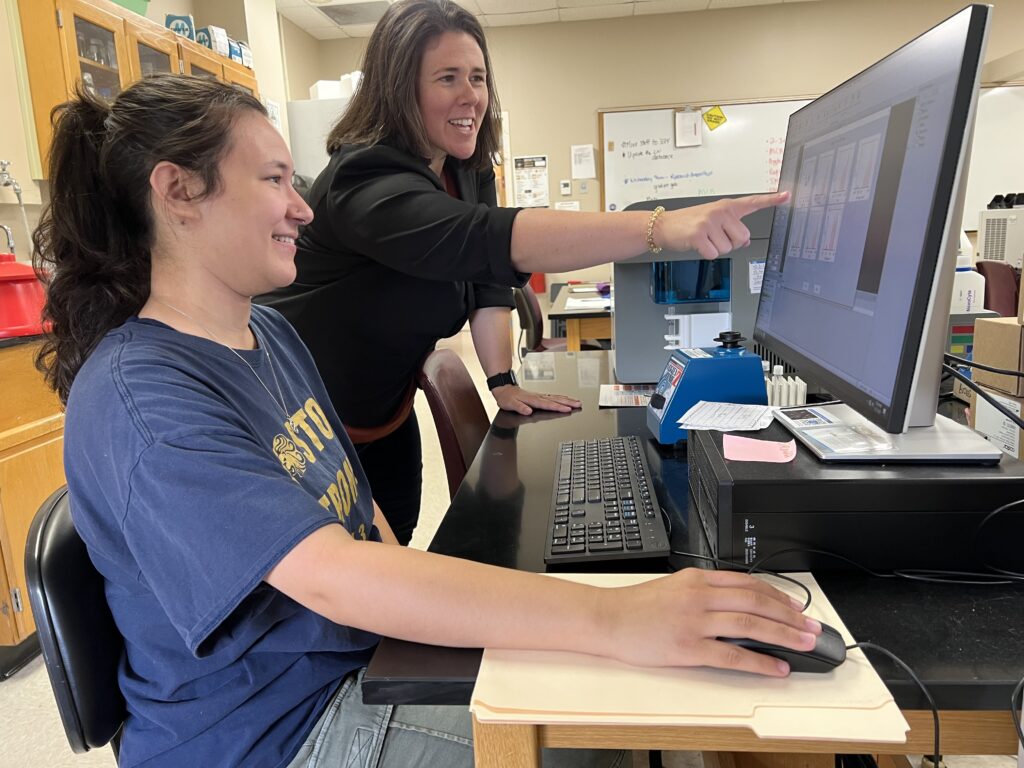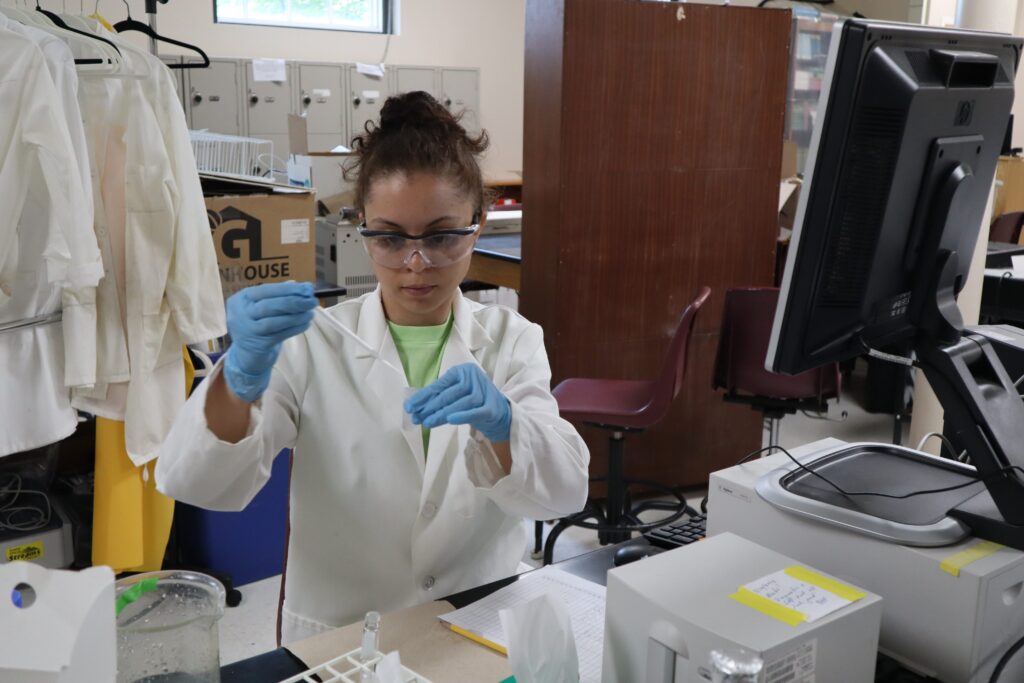Elections analyst visits campus and predicts ‘Biden versus Trump 2.0’
A Senior Elections Analyst at FiveThirtyEight says the 2024 Presidential Election will basically be a repeat of the 2020 election when it comes to the candidates on the ballot.

Geoffrey Skelley (Photo by Cat Cutillo)
That’s the message that political analyst Geoffrey Skelley delivered to members of the Saint Michael’s community who attended an event co-hosted by departments of History, Political Science and International Relations, and Digital Media and Communications. Skelley spoke about the presidential primaries process within our nation and gave an overview of what might happen in the 2024 election.
“The past can tell you a lot about what’s going on or at least provide clues,” Skelley said at the beginning of his talk. He added that we are currently at “the tail end in what is called the invisible primary” as candidates are establishing if they’re viable to be on the 2024 ballot.
Skelley explained that the votes, caucuses and primaries eventually tend to align with the delegates that a candidate will have at the national convention. Those delegates officially nominate a candidate for president.
With Vermont’s voting system, however, Skelley explained there is a winner-takes-all trigger, so whoever wins the majority of the votes on the March 5, 2024, presidential primary election, will get all 17 of Vermont’s delegates — a drop in the bucket of the 2,000 total delegates that will make up the national convention. The Democratic National Convention will be held in Chicago and the Republican National Convention will be in Milwaukee.
“It’s been a long time since we’ve had a situation where there was really any doubt about who was going to be the nominee,” Skelley said.
However, he warned, “It could still happen.”
“The potential of a Trump-Biden rematch is real possible,” Skelley said. “By mid-March we’ll know if that’s the rematch that’s happening.”
A history lesson on elections
After giving the basic outline of the presidential election process, Skelley explained how the U.S. created this system.
Before 1832, a congressional caucus in an informal group nominated party candidates for president in what became known as a “King Caucus.” In the early 20th Century, states started to implement primaries in what was called the Progressive Era. In 1912, the U.S. saw the first major use of presidential primaries.
According to Skelley, it took another six decades before the U.S. adopted the system it has today. The 1968 election served as a catalyst to create that system.
“It set us on the course where we are today where the convention is no longer the decision—it’s the primaries and the caucuses,” Skelley said.
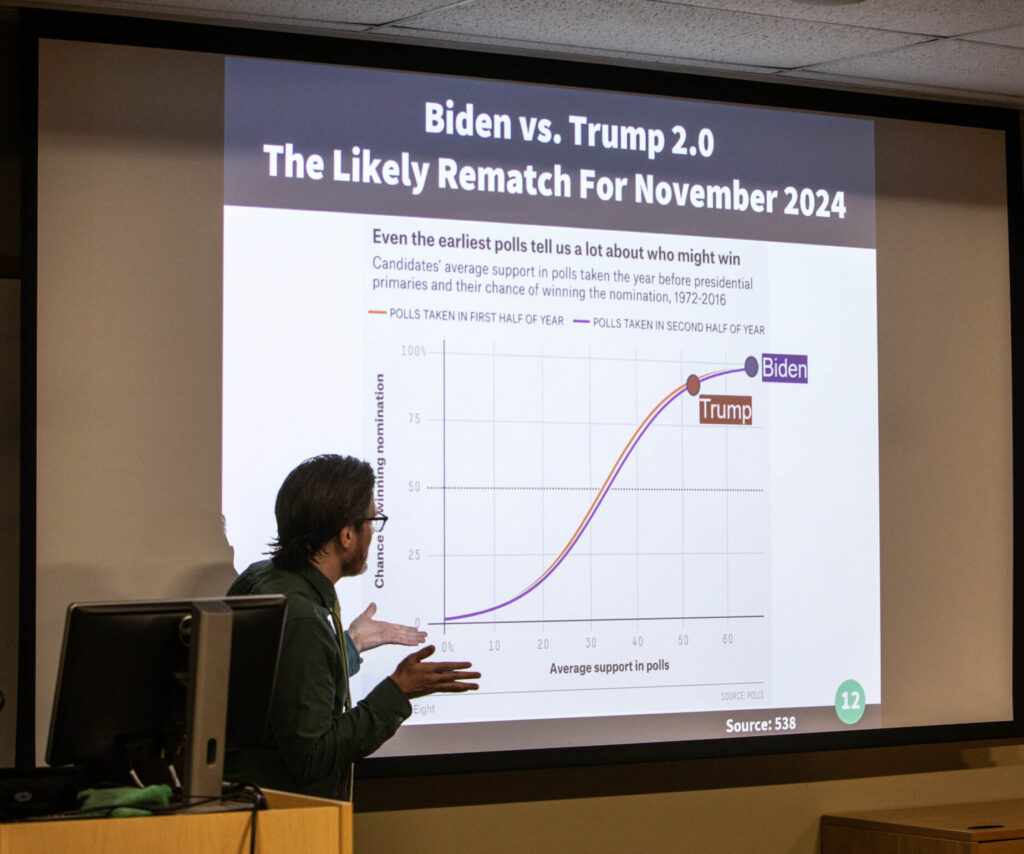
(Photo by Cat Cutillo)
What voters might expect in 2024
After giving the history, Skelley dove into a talk about the 2024 election.
“Trump is attempting a comeback but it’s a very unusual one,” Skelley said. “This is the first time a former president is actively running again for president” in modern times.
Skelley showed charts of metrics that were useful for understanding the race. The first slide showed that Trump is leading substantially with 57%in the Republican national primary polls, making him “very likely to win” the Republican primary election. He’s followed by Ron DeSantis, the Governor of Florida who has 14 %; Nikki Haley, the former Governor of South Carolina who has less than 9%; and Vivek Ramaswamy, an entrepreneur who has 5%.
“They face a difficult road to beat Trump, but I don’t want to discount that something could happen,” Skelley said.
Skelley then dissected the Democratic primaries outlook.
“The conditions for Biden to actually lose are probably not there,” he said, displaying a chart that showed Biden is leading in 70% of the national Democratic polls. “There isn’t actually a lot of dissatisfaction with what he’s done as president among Democrats at large.”
One audience member asked for Skelley’s thoughts on how the conflict between Israel and Gaza would affect Biden’s approval rating, especially among younger voters.
“I think he has problems with young people to begin with because they probably don’t want an 80-year-old guy as president,” Skelley said. “In terms of shifting the overall approval rating among Democrats— it’s probably not going to move it that much.”
Skelley then displayed an analysis that ran on FiveThirtyEight’s website until the beginning of November, which showed that Biden and Trump are very close in national poll projections.
“The point is, we’re probably going to get Biden versus Trump 2.0,” Skelley said, noting that could change if either of the candidates have a health crisis. Even Trump’s criminal cases might not prevent him from winning the White House once again, Skelley said.
“If Trump gets convicted of something in June of next year, he’s not going to prison by the time the election happens because he’ll appeal,” Skelley said. “But we don’t know how any of that might shape and change opinions. We’re not talking about huge shifts because the country is very divided. People are very polarized. They tend to know who they’re voting for already.”
But Skelley said there is a small percentage of the population that is actually swinging, and their opinions could shift.
“What I can say is it’s probably going to be a close election,” he said.
